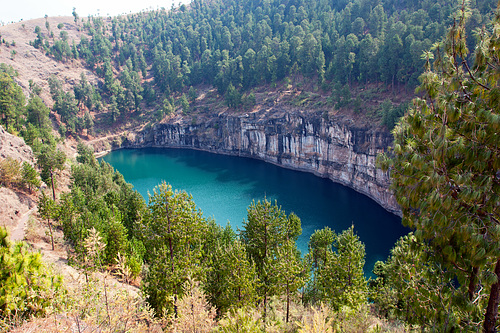I left Nosy Boraha on a flight back to the capital, then caught a taxi for a 105mi (170km) journey south, about a three-to-four-hour drive, to reach Antsirabe, Madagascar’s third-largest city. Established by Norwegian missionaries in 1872, Antsirabe became a resort town during the French colonial era, thanks to its thermal springs.
The moment I arrived, I could feel the change from the muggy heat of the coast to the crisp, cool air I had experienced during my earlier highland visit. Perched in the highlands at 4,920ft (1,500m) above sea level, Antsirabe’s tree-lined boulevard stretched from the city centre, flanked by old colonial buildings, many still beautifully maintained, giving the city a nostalgic aura. I walked past Asabotsy Market, an open-air market with stalls loaded with fresh produce, crafts and souvenirs.
The street rumbles with traffic and a never-ending flow of rickshaws, known locally as pousse-pousses. This humble form of transportation was introduced in the 1920s when Chinese workers hired for railroad construction brought it with them. Brightly coloured and patterned, the original rickshaw was pulled by a person on foot. Later modifications evolved it into a tricycle-style or bicycle-pulled version, offering greater speed and reduced physical strain for the drivers.
After days of adventuring across Madagascar, I sought a restorative experience and knew exactly where to go. Hopping into a pousse-pousse, I asked the driver to deliver me to Hôtel des Thermes, a grand colonial hotel that still carries the air of 19th-century elegance. I wasted no time sinking into the hotel’s thermal baths, and the relief was immediate. The mineral-rich water, naturally heated from the earth, soothed every ache I hadn’t realised I was carrying. I stayed longer than planned, letting the steam envelop me as the tension melted away, completely surrendering to it. It was the healing I very much needed.
Relaxed and rejuvenated, I was ready for more exploration. Hailing a taxi, I left the city for Lake Tritriva, a stunning volcanic crater lake nestled in the hills. Formed thousands of years ago, the lake is a maar—a type of crater created when magma interacts with groundwater, causing an explosive eruption that forms a depression, which later fills with water. The striking blue water is surrounded by steep, vertical cliffs, with thick vegetation spilling over the edges and trees framing the lake.
A well-maintained path circles the lake, allowing me to walk around and photograph this incredibly photogenic spot. I took shots from several angles, capturing the lake’s striking blue water and the surrounding cliffs, each offering a new view of the landscape.
Returning to Antsirabe, I was ready for a feast and couldn’t wait to indulge in some traditional fare. I settled on a cosy restaurant known for its home-cooked Malagasy meals and immediately ordered the local hena kisoa (pork stew). When it arrived, the rich aroma of slow-simmered pork hit me, and once I took my first bite, it practically melted in my mouth. The deep, savoury flavour was soaked with tangy tomatoes, and I picked up the distinct spices of turmeric and cumin, mixed with the subtle sweetness of the onions, while the ginger gave it a slight kick. As I scooped up the sauce with the rice and tender pork, my thoughts turned to my journey, aware that this chapter was winding down and my final destination was just around the corner.











No comments:
Post a Comment
It's so good to see you here . . .